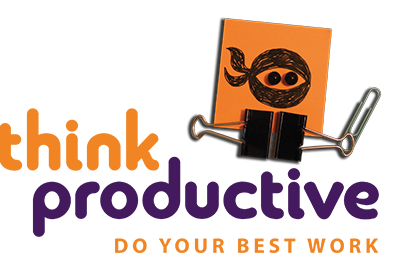Roald Amundsen (Norwegian) and Robert Scott (American) both wanted to be the first people who reached the South pole. In 1911 Roald Amundsen was the first person who reached the South pole. His ‘competitor’ Robert Scott got there a couple of months after him, but he didn’t survive the trip.
Both explorers approached the race to be the first one on the South pole differently. Robert Scott was hoping for the best scenario and Amundsen chose extreme preparation. For the trip Scott only had one thermometer and a ton of food for 17 men. He also placed all of his supplies for the way back in one spot and he only marked it with one flag. Amundsen, on the other hand, prepared himself for every possible scenario and he brought along with him multiple thermometers, three tons of food and he planted 20 flags for their way back. It’s a classic example of extreme preparation vs. minimal preparation.

3 Essential Preparations for Productivity Ninjas
Start with these preparations if you want to be the Roald Amundsen of your office:
Step 1: Prepare your preparation time
This is a weird sentence to read: prepare your preparation. This is what it means: plan time for your preparation time on a daily basis. A lot of Productivity Ninjas prepare and execute at the same time. This is less efficient. Compare it to Robert Scott’s actions… He made his preparations whilst he was already on his way.
 It doesn’t matter if you do it in the morning or at the end of your workday: take time to prepare for your most important highly cognitive tasks. Do you have to put together an important presentation? Write down your setup on the first slide. Do you need to write a proposal? Open the document and write the last page.
It doesn’t matter if you do it in the morning or at the end of your workday: take time to prepare for your most important highly cognitive tasks. Do you have to put together an important presentation? Write down your setup on the first slide. Do you need to write a proposal? Open the document and write the last page.
Step 2: Prepare for delays
A lot of tasks require more time. It’s therefore important to make use of margins. Plan your work or meetings and add some extra time to it, before or after. I advise people to use a margin of 15 minutes (before and after each task) since most professionals do this.

Step 3: Prepare for a bad day
This might sound crazy but just like Amundsen we need to prepare ourselves for a bad day. We must therefore assume that you have so many little tasks and meetings that you can’t do anything else. Protect your day against distractions and write down on paper what you minimally need to do in order to be satisfied.
Do you need to finish a large task? Write down what the minimum progress has to be for that day so you still made some progress.
By Jan Smit
You can read the original article on Think Productive’s Benelux site.
[vc_row][vc_column][vc_cta h2=”Before You Go… ” txt_align=”center” color=”violet” add_button=”bottom” btn_title=”Get Back on Track ” btn_color=”warning” btn_align=”center” btn_link=”url:https%3A%2F%2Fthinkproductive.co.uk%2Fgetting-back-on-track-after-a-bad-month%2F|||”]Speaking of a bad day – sometimes it seems like everything is going wrong and getting back on track can be difficult. We’ve put together a list of actions you can easily implement to lift your spirit and boost your productivity once more.[/vc_cta][/vc_column][/vc_row]
